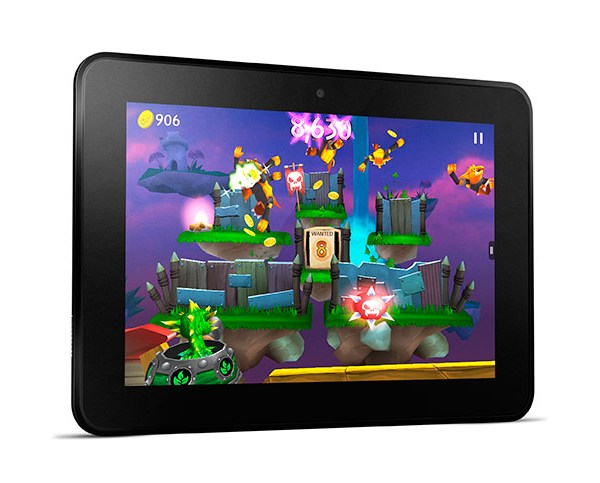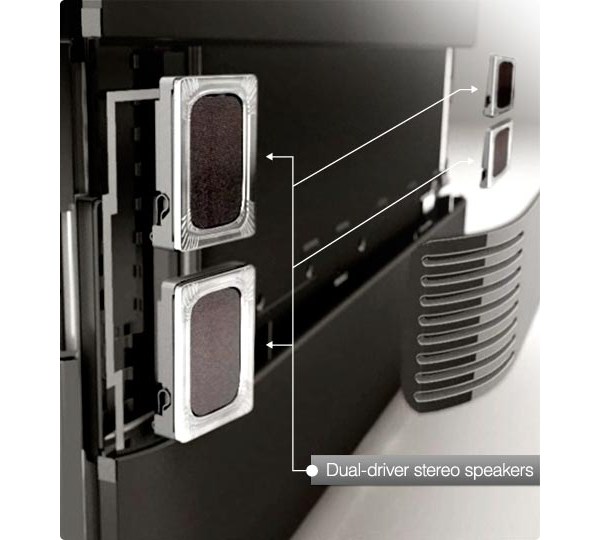Affiliate links on Android Authority may earn us a commission. Learn more.
Analysis: The Kindle Fire HD, what it's got and what it hasn't got

Price
Before looking at features it is important to look at the pricing. Not everyone is a millionaire and most of us have a budget. Pricing is a crucial factor when choosing a tablet and Amazon have aimed the 7 inch Kindle Fire HD directly at the Google Nexus 7. Both tablets start at $199 and have a model with more storage for $249. However the key bonus for the Kindle Fire HD 7 is that it comes with 16GB of internal storage for $199 and not 8GB like the Nexus 7. The bigger model has double that of the bigger Nexus 7 with the Kindle sporting 32GB while the biggest Nexus only holds 16GB. Another competitor is the newly announced Kobo Arc which is due to hit stores in November. Its pricing is similar to the Nexus 7 with 8GB costing $199.99 and the 16GB model setting you back $249.99.
Moving up to the bigger form factor, the Kindle HD 8.9 starts at $299 for 16GB while the 32GB model costs $369. It isn’t fair to compare this to the Nexus 7 but you can compare it to the iPad which starts at $399 for an iPad 2 or $499 for a ‘new iPad’. Both come with 16GB of flash storage.
Finally, the revamped Kindle Fire (non-HD) is priced at a jaw dropping $159 (£129 in the UK). That means you get a dual-core, 7 inch, 1024×600 Android tablet with IPS (in-plane switching which means better viewing angles) and 8GB of storage for $20 more than a Kindle Keyboard 3G… Impressive.
So clearly in terms of raw price, Amazon has done an incredible job and is the clear winner.

Features
So the new Kindle Fire range is brilliantly priced, but what do you get for your money? The unique features of the Kindle Fire HD are:
- Dolby Audio and Dual-Driver Stereo Speakers – The dual-driver stereo speakers are on both sides of the display and when combined with the Dolby Digital Plus technology, the result should be the closest thing to home theater sound that you can get from a tablet. The Kindle Fire HD also has audio profiles which change depending on what you’re doing. The output is optimized for different activities like watching a movie or listening to music.
- Two Antennas and Dual band support – Amazon say that the Kindle Fire HD has 40% faster Wi-Fi compared to the ‘new iPad’. By using dual Wi-Fi antennas and Multiple In/Multiple Out (MIMO) technology the tablet can send and receive over both antennas simultaneously. It can also use the 5 GHz Wi-Fi frequency (used by 802.11a) in conjunction with the 2.4 GHz band. The tablet is able to automatically switch between the two and use the less congested 5 GHz band for better range and less interference. Of course, you will need a dual-band router to take full advantage of these features.
- 11 hour battery life – The Google Nexus 7 has a 9.5 hour battery life, while the iPad lasts about 10 hours. Amazon are claiming that the 7 inch Kindle Fire HD will last for 11 hours. Hype? Perhaps slightly exaggerated, but still an impressive number.
So clearly the dual-core, 1280×800 Kindle Fire HD has a lot to offer, but what is missing:
- GPS and magnetometer – One of the neat features of the Nexus 7 is that it includes a GPS and magnetometer which means it can be used for turn-by-turn navigation as well as for a whole bunch of location aware services like Google Now. But the Kindle Fire HD has none of these. This means that the Fire HD is a very much stay at home device. For many that will be fine, but for some this gives the Nexus 7 the edge. The 3G versions of the iPad also have GPS where as the Kindle Fire HD 8.9 inch 4G LTE does not.
- Bluetooth and NFC – Does a tablet need Bluetooth and NFC? I don’t know, but the Nexus 7 has both and the iPad has Bluetooth. If you need them then the Kindle Fire HD isn’t for you.
- Decent cameras – Devices like the iPad and Samsung Galaxy Tab 2 include rear and front facing cameras. The Nexus only has a front facing 1.2 MP camera while the Fire has an unspecified front facing camera. Do people take photos with their tablets? Nah! Is a front facing camera useful? Yes! Is the front facing camera on the Fire HD good enough? Yet unknown.
- Lack of Google Play – Just about every Android device in the universe offers access to Google Play (with the exception of some low-end Chinese makes) but Amazon has its own ecosystem for films, TV, music and of course apps. The Amazon Appstore isn’t as large as Google Play but all the essentials are available both in terms of free apps and paid apps. Some people don’t like it. If you absolutely need access to Google Play then none of the Kindle Fire devices are for you.
Summary
The situation is basically this: if you need Google Play, GPS and NFC then don’t buy a Kindle Fire HD. Otherwise, considering the price and the 16GB/32GB of storage, the Kindle Fire looks like an excellent choice. Watch out for more in-depth reviews when the devices become available.
Which way will you go? Does the Kindle Fire HD look attractive to you?